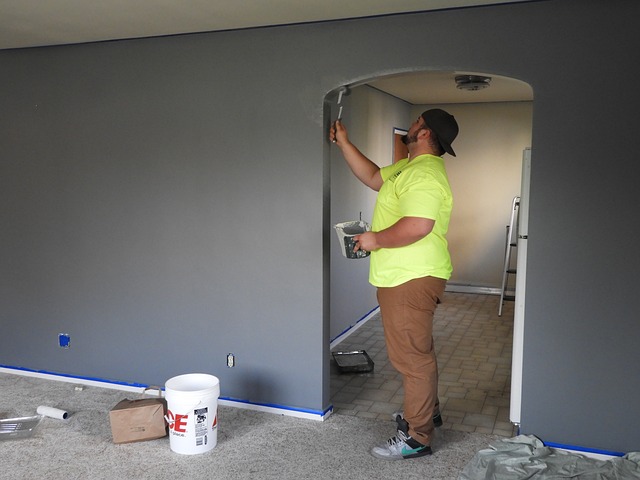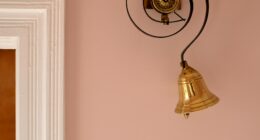Wall paint is designed for vertical surfaces, while ceiling paint is formulated to resist drips and splatter on overhead surfaces, offering better coverage.
TL;DR Wall paint Vs. Ceiling paint
Wall paint is designed to withstand daily wear and tear, as it may be subject to frequent touching, cleaning, and potential stains. It offers more durability and stain resistance compared to ceiling paint.
Ceiling paint is specifically formulated for use on ceilings. It has a flatter finish that helps to minimize glare and hide imperfections. Ceiling paint tends to be less durable than wall paint since ceilings are not typically exposed to the same level of contact.
What is Wall Paint?

Wall paint, also known as interior paint, is a specially formulated coating applied to vertical surfaces within a building. It enhances aesthetics, protects walls, and provides a durable finish.
Wall paint comes in various types, such as latex or oil-based, each offering unique benefits. It is available in an extensive color palette and finishes, allowing customization to suit different design preferences.
Proper surface preparation, priming, and application techniques ensure the longevity and visual appeal of wall paint, contributing to the overall interior décor and ambiance of a space.
What is Ceiling Paint?

Ceiling paint is a specialized coating designed for application on overhead surfaces. Formulated to resist drips and splatter, it provides optimal coverage while minimizing mess during application.
Ceiling paint often features a flat finish to help diffuse light and reduce glare. It is engineered to adhere to various ceiling materials, such as drywall or plaster, and is available in a range of colors.
The composition and consistency of ceiling paint make it suitable for addressing the unique challenges posed by painting horizontal surfaces. Properly applying ceiling paint enhances the aesthetics of a room and contributes to a cohesive interior design.
Wall paint Vs. Ceiling paint – Key differences
| Criteria | Wall Paint | Ceiling Paint |
|---|---|---|
| Surface Orientation | Vertical surfaces | Horizontal overhead surfaces |
| Formulation | Versatile for various wall materials | Designed to resist drips and splatter on ceilings |
| Finish | Available in various finishes (e.g., flat, satin, semi-gloss) | Often features a flat finish to reduce glare |
| Coverage | Provides coverage for walls | Engineered for optimal coverage on ceilings |
| Drip Resistance | May not be specifically formulated to resist drips | Formulated to resist drips and splatter during application |
| Light Reflection | Reflects light in different ways based on finish | Often designed to diffuse light, reducing glare on ceilings |
| Color Range | Available in a wide range of colors | Offers a variety of colors suitable for ceilings |
| Adhesion Properties | Engineered for vertical adhesion on various wall surfaces | Formulated to adhere effectively to overhead materials like drywall or plaster |
| Special Considerations | May not have features to address challenges of overhead application | Formulated to minimize mess and provide even coverage on horizontal surfaces |
| Application Techniques | Applied using standard painting techniques for walls | May involve specific techniques to address overhead challenges |
| Aesthetic Impact | Contributes to the overall aesthetic of interior spaces | Enhances the appearance of ceilings and complements the overall design |
Wall paint Vs. Ceiling paint – Durability and Stain Resistance
Wall Paint:
Durability: Designed to withstand wear and tear on vertical surfaces but may be more susceptible to scuffing and marks from contact or furniture.
Stain Resistance: Varies based on the type and brand; may offer stain resistance to a certain extent, depending on the formulation.
Cleaning Ease: Cleaning may require solutions suitable for wall surfaces, and the finish can impact durability.
Common Challenges: Faces challenges like scuffing and marks from contact or furniture.
Finish Impact: The finish chosen for walls may impact durability; higher gloss finishes may be more durable.
Ceiling Paint:
Durability: Formulated to withstand the unique conditions of ceilings, minimizing wear and tear.
Stain Resistance: Often specifically formulated with stain-resistant properties suitable for overhead surfaces.
Cleaning Ease: Engineered for easy cleaning of overhead surfaces, including stain removal.
Common Challenges: Addresses challenges like stains from water leaks, dust, or cooking on ceilings.
Finish Impact: Often chosen with a flat finish to reduce glare, and durability considerations are factored into the formulation.
Image Credits
Featured Image By – Gerd Altmann from Pixabay
Image 1 By – Laura Shaw from Pixabay
Image 2 By – Photo by Ksenia Chernaya








